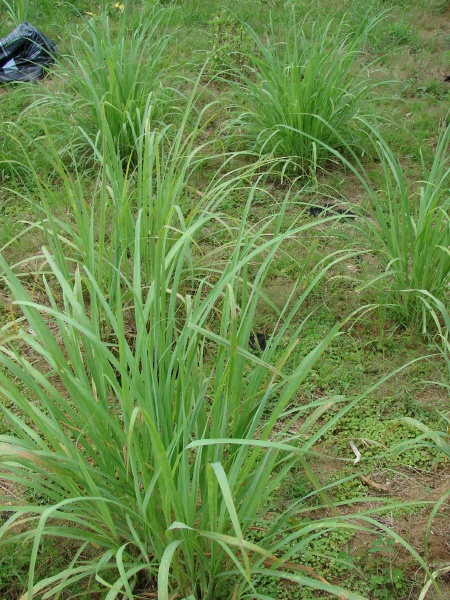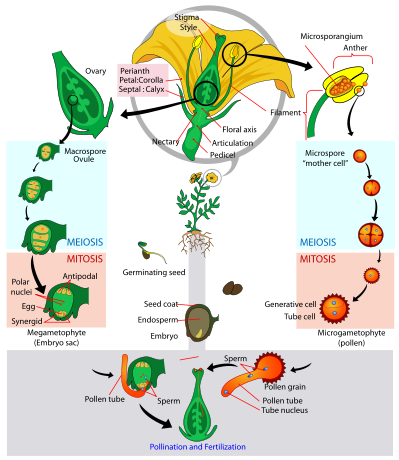
Reproduction
Cymbopogon citratus belongs to the phylum Magnoliophyta or angiosperms, which are commonly identified as flowering plants. Although the florets they produce my not be flowers you picture when you hear the word, they are in fact flowering plants. For information on the phyla and classes see classification.
In
plain and simple terms, Cymbopogon citratus produces florets,
flowers, that grow in small clustered groups called spikelets.
Groups of spikelets are known as inflorescences. Being het erogamous,
the lemongrass flowers produce the diploid zygote
where male spores fertilize female ovules. This is done via sexual
reproduction.
erogamous,
the lemongrass flowers produce the diploid zygote
where male spores fertilize female ovules. This is done via sexual
reproduction.
During the first phase of reproduction, the spores are produced through meiosis in the sporophyte. The remainder of the life cycle is dependant on how the spores are differentiated by whether or not they are formed in the microsporangium, containing the male gametophyte, or megasporangium, containing the female gametophyte.
When formed in the microsporangium, the microspores contain the male gametophyte. This gametophyte contains two cells that divide: the generative cell, which forms two sperm; and the tube cell, which forms the pollen tube. In the male gametophyte life cycle, the first first phase is where the microspores are formed from meiosis in the microsporophyte. during the second phase the pollen grain is formed from the spores. It is during this phase that the generative cell divides and forms the two sperm and the tube cell produces the pollen tube. The pollen then moves on to pollinate the ovules.
The female gametophyte, known as the embryo sac, lies inside the megasporangium which is protected by the ovule. The embryo sac contains a small amount of cells, one of which is the egg. The four meagspores are produced via meiosis in the megasporophytes. One of the spores survives and forms this female gametophyte that we just discussed.
When the male and female gametophyte come together, the two haploid spores undergo double fertilization and form the diploid zygote. during double fertilization the one of the two sperm fertilizes the egg ( forming the zygote that develops into the embryo) and the other sperm fertilizes the central cell, which forms the endosperm (the food for the embryo). The two are packaged together into the seed which then germinates and forms the mature sporophyte.
Another edible angiosperm is Pineapple!
